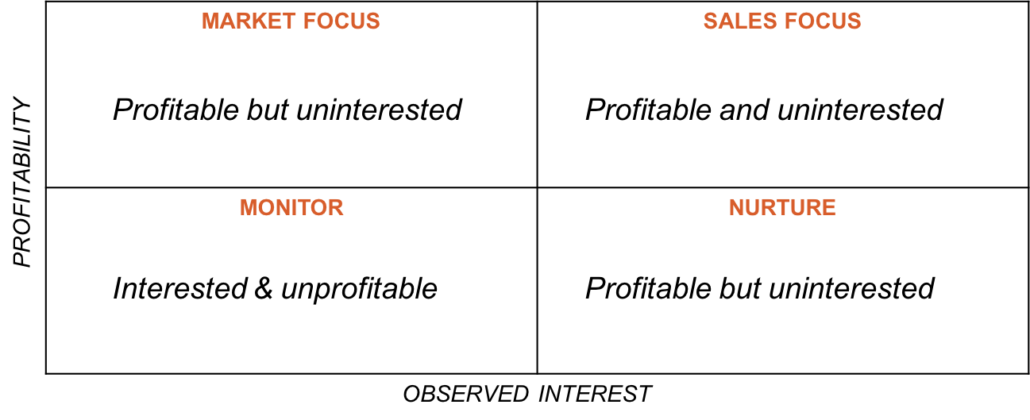Financial advisors are an amazingly difficult prospect to engage. They are incredibly busy and already have a wealth of resources available to them; in fact, it may be fair to ask if they even need to engage with wholesalers? That’s why we say the best way to convert financial advisors to customers is to build your marketing automation program around them.
Lead generation starts with effective segmentation
Before focusing on key strategies, Sales and Marketing must have defined a set of engagement personas and customer segments. Marketing has worked with personas for at least a decade, but only since the advent of marketing automation software have engagement personas become empowered and brought to life.
Defining financial advisor segments for lead generation
Creating clarity with Sales is a two-step process:
- Lead scoring – a measure of how active a financial advisor is on your digital properties
- Lead grading – a measure of how profitable the financial advisor is likely to be

While it may take several iterations to get lead scoring and grading optimized, the process should be fruitful for Sales and Marketing. It crystallizes Marketing and Sales perspectives around which advisors are most profitable and which digital behaviors are believed to be most relevant to a sale. Some marketing automation vendors have one score that represents profitability and interest. However, being able to separate advisor behaviors from profitability factors simplifies discussions by clarifying customer segments by profitability as seen in the above graphic. As an example, Pardot applies a numerical value for an advisor’s lead score and a letter grade (A-F) for an advisor’s expected profitability.
Dynamic content makes asset manager content relevant
Building your program in an advisor-centric model ensures advisors receive relevant emails and experience relevant content on your website. More targeted communications with customized messaging leads to a higher conversion rate. Different vendors implement dynamic content differently, but speaking generally, it can be inserted into email, landing pages or web pages. Dynamic content also allows digital marketers to tailor the content based on any attribute of the customer contained in their Marketing Automation profile.
Dynamic content examples
Here’s a web example. Let’s say you have an investment product A on the recommended list at wirehouse B. You can feature that product on your web pages for visitors from that firm. You might not want to create dynamic content for every firm, but it certainly is a good idea to create it for recommended products at key distribution firms.
Or consider an email example. Let’s assume you send a regular email to advisors that use your investment products in client portfolios to keep them informed of how the fund managers are viewing fund performance. You can create dynamic content for your key investment teams – short summaries of manager commentary with links to more. Your marketing automation program will be able to send a customized digest email with highly relevant content featuring information for all the investment products an advisor is using. This is an email an advisor will welcome and even look forward to.
Behavior-based communications puts the advisor at the center
A behavior-based communication strategy builds on your previous work on building engagement personas and your segmentation strategy. The driving principle is to observe prospects’ behavior and let that be your guide to better attract that individual prospect. Some examples will clarify the concept.
- An advisor has shown a preference for a type of content – videos, whitepapers, etc. Use dynamic content configurations to provide that advisor the type of content they prefer.
- An advisor is visiting product web pages for products not currently being used. Sounds like a revenue generation opportunity for a cross-sell. Automatically add the advisor to a nurturing campaign for that product.
- An advisor is active on your website site but not opening emails. If this prospect is likely to be highly profitable, send them an engaging direct mail piece with a call to action that drives them back to the site. If they follow up, you’ll know that advisor prefers good, old fashioned snail mail
One last word on behavior-based communication. While marketing automation programs prefer to function in linear, scheduled campaigns, today’s consumer has grown accustomed to bingeing, be it viewing Netflix programs or investment information. Configure your marketing automation program to suit your customer’s content bingeing habits. There is no need to wait a week for a follow-up email; start providing relevant content right away. Some of this can be automated, some will require exporting details to a spreadsheet for analysis before reprogramming your marketing automation system.










Leave a Reply
Want to join the discussion?Feel free to contribute!